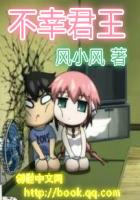Soames passed into the corner where, side by side, hung his real Goya and the copy of the fresco "La Vendimia." His acquisition of the real Goya rather beautifully illustrated the cobweb of vested interests and passions which mesh the bright-winged fly of human life. The real Goya's noble owner's ancestor had come into possession of it during some Spanish war--it was in a word loot. The noble owner had remained in ignorance of its value until in the nineties an enterprising critic discovered that a Spanish painter named Goya was a genius. It was only a fair Goya, but almost unique in England, and the noble owner became a marked man. Having many possessions and that aristocratic culture which, independent of mere sensuous enjoyment, is founded on the sounder principle that one must know everything and be fearfully interested in life, he had fully intended to keep an article which contributed to his reputation while he was alive, and to leave it to the nation after he was dead.
Fortunately for Soames, the House of Lords was violently attacked in 1909, and the noble owner became alarmed and angry. 'If,' he said to himself, 'they think they can have it both ways they are very much mistaken. So long as they leave me in quiet enjoyment the nation can have some of my pictures at my death. But if the nation is going to bait me, and rob me like this, I'm damned if I won't sell the lot.
They can't have my private property and my public spirit-both.' He brooded in this fashion for several months till one morning, after reading the speech of a certain statesman, he telegraphed to his agent to come down and bring Bodkin. On going over the collection Bodkin, than whose opinion on market values none was more sought, pronounced that with a free hand to sell to America, Germany, and other places where there was an interest in art, a lot more money could be made than by selling in England. The noble owner's public spirit--he said--was well known but the pictures were unique. The noble owner put this opinion in his pipe and smoked it for a year.
At the end of that time he read another speech by the same statesman, and telegraphed to his agents: "Give Bodkin a free hand." It was at this juncture that Bodkin conceived the idea which salved the Goya and two other unique pictures for the native country of the noble owner. With one hand Bodkin proffered the pictures to the foreign market, with the other he formed a list of private British collectors. Having obtained what he considered the highest possible bids from across the seas, he submitted pictures and bids to the private British collectors, and invited them, of their public spirit, to outbid. In three instances (including the Goya) out of twenty-one he was successful. And why? One of the private collectors made buttons--he had made so many that he desired that his wife should be called Lady "Buttons." He therefore bought a unique picture at great cost, and gave it to the nation. It was "part," his friends said, "of his general game." The second of the private collectors was an Americophobe, and bought an unique picture to "spite the damned Yanks." The third of the private collectors was Soames, who--more sober than either of the, others--bought after a visit to Madrid, because he was certain that Goya was still on the up grade. Goya was not booming at the moment, but he would come again; and, looking at that portrait, Hogarthian, Manetesque in its directness, but with its own queer sharp beauty of paint, he was perfectly satisfied still that he had made no error, heavy though the price had been--heaviest he had ever paid. And next to it was hanging the copy of "La Vendimia." There she was--the little wretch-looking back at him in her dreamy mood, the mood he loved best because he felt so much safer when she looked like that.
He was still gazing when the scent of a cigar impinged on his nostrils, and a voice said:
"Well, Mr. Forsyde, what you goin' to do with this small lot?"That Belgian chap, whose mother-as if Flemish blood were not enough--had been Armenian! Subduing a natural irritation, he said:
"Are you a judge of pictures?"
"Well, I've got a few myself."
"Any Post-Impressionists?"
"Ye-es, I rather like them."
"What do you think of this?" said Soames, pointing to the Gauguin.
Monsieur Profond protruded his lower lip and short pointed beard.
"Rather fine, I think," he said; "do you want to sell it?"Soames checked his instinctive "Not particularly"--he would not chaffer with this alien.
"Yes," he said.
"What do you want for it?"
"What I gave."
"All right," said Monsieur Profond. "I'll be glad to take that small picture. Post-Impressionists--they're awful dead, but they're amusin'. I don' care for pictures much, but I've got some, just a small lot.""What do you care for?"Monsieur Profond shrugged his shoulders.
"Life's awful like a lot of monkeys scramblin' for empty nuts.""You're young," said Soames. If the fellow must make a generalization, he needn't suggest that the forms of property lacked solidity!
"I don' worry," replied Monsieur Profond smiling; "we're born, and we die. Half the world's starvin'. I feed a small lot of babies out in my mother's country; but what's the use? Might as well throw my money in the river."Soames looked at him, and turned back toward his Goya. He didn't know what the fellow wanted.
"What shall I make my cheque for?" pursued Monsieur Profond.
"Five hundred," said Soames shortly; "but I don't want you to take it if you don't care for it more than that.""That's all right," said Monsieur Profond; "I'll be 'appy to 'ave that picture."He wrote a cheque with a fountain-pen heavily chased with gold.
Soames watched the process uneasily. How on earth had the fellow known that he wanted to sell that picture? Monsieur Profond held out the cheque.
"The English are awful funny about pictures," he said. "So are the French, so are my people. They're all awful funny.""I don't understand you," said Soames stiffly.















